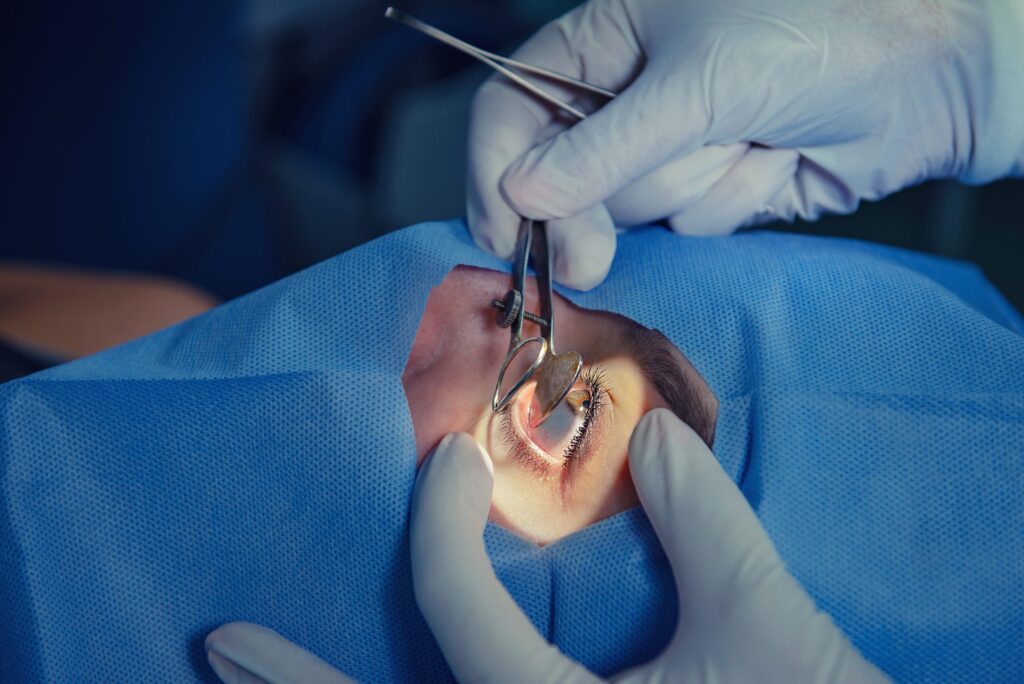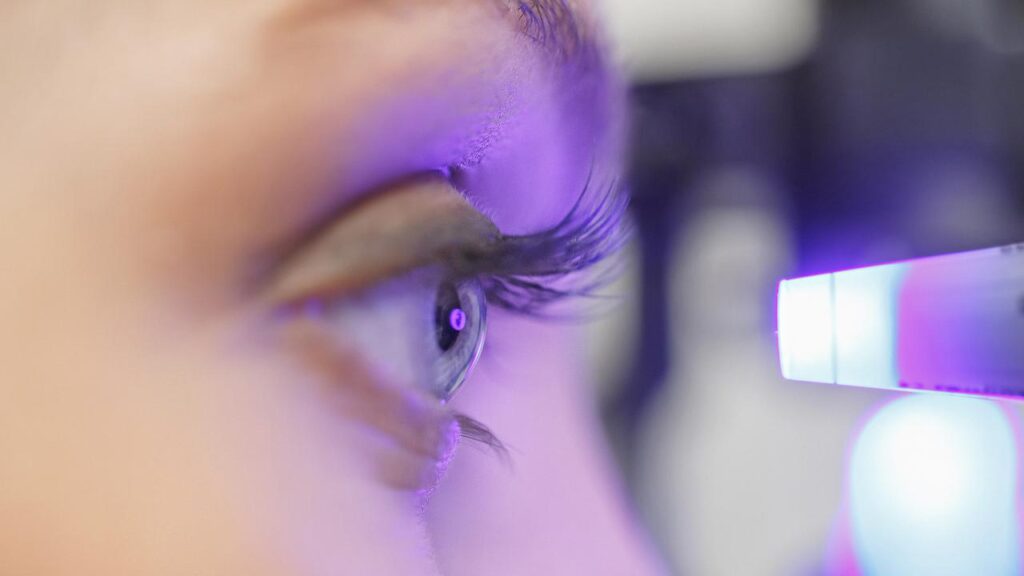Laser eye surgery has come a long way since its inception, with advancements in technology leading to more precise and effective procedures. From the early days of PRK to the introduction of LASIK and the emergence of SMILE, the field of laser eye surgery has revolutionized the way we correct vision.
Understanding the Basics of Laser Eye Surgery
Before diving into the specifics of each procedure, it’s important to have a basic understanding of how laser eye surgery works. At its core, laser eye surgery Sydney aims to reshape the cornea, the front part of the eye, to correct refractive errors such as nearsightedness, farsightedness, and astigmatism.
The cornea plays a crucial role in focusing light onto the retina, and any imperfections in its shape can result in blurred vision. By using a laser, surgeons can precisely remove or reshape the cornea to improve its focusing ability, leading to clearer vision.
Now, let’s take a closer look at the science behind laser eye surgery and the role lasers play in vision correction.
Laser eye surgery is a revolutionary advancement in the field of ophthalmology, offering patients a chance to reduce or eliminate their dependence on glasses or contact lenses. The procedure is typically quick and painless, with most patients experiencing improved vision almost immediately after surgery. Learn more about benefits of bladeless laser eye surgery.
During the surgery, the laser is used to sculpt the cornea with extreme precision, correcting the refractive errors that were causing vision problems. This precise reshaping allows light to focus properly on the retina, resulting in clearer and sharper vision.
The Science Behind Laser Eye Surgery
Laser eye surgery is rooted in the principles of phototherapeutic keratectomy, or PRK. This technique, developed in the 1980s, involved removing the outer layer of the cornea to reshape it and correct refractive errors.
The cornea, the transparent front part of the eye, plays a crucial role in focusing light that enters the eye. By reshaping the cornea through laser eye surgery, the surgeon can correct common vision problems such as nearsightedness, farsightedness, and astigmatism.
The process begins with the surgeon applying numbing eye drops to the patient’s eye. Next, a specialized laser, known as an excimer laser, is used to precisely remove a small amount of tissue from the cornea. This reshaping process allows the cornea to better focus incoming light onto the retina, resulting in improved vision.
While PRK was a significant advancement in the field of laser eye surgery, it had its limitations. Patients experienced longer recovery times and discomfort post-surgery compared to the more modern LASIK procedure.
On the other hand, LASIK (Laser-Assisted in Situ Keratomileusis) has gained popularity for its quick recovery time and minimal discomfort. In LASIK surgery, a thin flap is created on the cornea using a femtosecond laser or a microkeratome. This flap is then lifted to allow the excimer laser to reshape the underlying corneal tissue before being repositioned, eliminating the need for sutures.
Both PRK and LASIK have revolutionized the field of vision correction, providing millions of people with clearer eyesight and reducing their dependence on glasses or contact lenses. The advancements in laser technology continue to improve these procedures, making them safer and more effective for patients seeking to enhance their quality of life through better vision.
The Inception of PRK (Photorefractive Keratectomy)
PRK, a revolutionary procedure in the field of ophthalmology, marked a significant milestone by introducing the use of lasers for vision correction. This innovative technique quickly garnered attention and acclaim for its remarkable efficacy in addressing refractive errors and enhancing visual acuity.
During the procedure, skilled ophthalmologists delicately displace the epithelial layer of the cornea to unveil the underlying tissue. The precise application of the excimer laser then meticulously reshapes the cornea by eliminating minuscule amounts of tissue, guided by intricate measurements and computerized mapping of the eye’s surface.
Despite the exceptional outcomes achieved through PRK in rectifying refractive errors, it was not without its challenges. Patients undergoing this procedure often encountered an extended recovery period, characterized by discomfort and light sensitivity lasting for several days or even weeks. Furthermore, there existed a potential risk of developing corneal haze during the intricate healing process, necessitating close monitoring and care post-surgery.
As the medical community continued to refine and enhance the PRK technique, advancements in technology and surgical approaches led to improved outcomes and reduced recovery times for patients. The evolution of PRK paved the way for subsequent laser vision correction procedures, shaping the landscape of ophthalmic surgery and offering new possibilities for individuals seeking to achieve optimal visual clarity and freedom from refractive errors.

The Transition to LASIK (Laser-Assisted In Situ Keratomileusis)
To address the limitations of PRK, the field of laser eye surgery underwent another significant change with the development of LASIK. This procedure combined the precision of the excimer laser with a more refined surgical technique, leading to faster recovery times and reduced discomfort.
The LASIK procedure involves creating a thin flap on the cornea, which is then lifted to expose the underlying tissue. The excimer laser is used to reshape the cornea, just as in PRK, but with the added benefit of the protective flap. Once the cornea is reshaped, the flap is carefully placed back in its original position, eliminating the need for any sutures.
This advancement led to shorter recovery times and less post-operative discomfort. LASIK quickly became the preferred choice for many patients seeking laser eye surgery.
One of the key advantages of LASIK over PRK is the rapid visual recovery experienced by patients. While PRK patients may take several days to weeks to achieve optimal vision, LASIK patients often notice improved vision within hours of the procedure. This quick visual recovery is attributed to the protective flap that helps the cornea retain its natural shape post-surgery.
Furthermore, the precision of LASIK has significantly reduced the risk of side effects such as halos, glare, and difficulty with night vision, which were more commonly reported with earlier laser eye surgeries. The ability to customize the treatment to each patient’s unique corneal shape and refractive error has contributed to the high success rates and patient satisfaction associated with LASIK.
The Emergence of SMILE (Small Incision Lenticule Extraction)
In recent years, a new procedure called SMILE has emerged as a minimally invasive alternative to LASIK. SMILE stands for Small Incision Lenticule Extraction and represents another leap forward in the field of laser eye surgery.
Unlike LASIK, which involves creating a corneal flap, SMILE relies on a single small incision through which the surgeon removes a small piece of tissue, known as a lenticule, from the cornea. This reshaping of the cornea corrects refractive errors.
SMILE offers several advantages compared to LASIK. It requires a smaller incision, leading to faster healing and a reduced risk of complications. Additionally, SMILE preserves the majority of the corneal structure, potentially offering greater long-term stability.
However, as with any procedure, there are potential drawbacks to consider. SMILE is currently limited in its ability to correct astigmatism, and not all patients are eligible for this procedure. Nonetheless, SMILE has gained popularity and continues to be the focus of ongoing research and development.
One of the key aspects that sets SMILE apart from traditional LASIK is the way it minimizes disruption to the cornea. By utilizing a smaller incision and removing a lenticule through it, SMILE reduces the risk of dry eyes post-surgery, a common side effect of LASIK. This has made SMILE an attractive option for individuals who are concerned about potential dry eye issues.
Furthermore, the precision of the SMILE procedure allows for customization based on the unique characteristics of each patient’s eye. This personalized approach can lead to improved visual outcomes and patient satisfaction. The ability to tailor the treatment to individual needs is a significant advancement in the field of refractive surgery.

The Future of Laser Eye Surgery
The field of laser eye surgery is constantly evolving, driven by advancements in technology and the quest for improved outcomes. Looking ahead, there are several predicted developments that offer exciting possibilities for the future of vision correction.
Predicted Developments in Laser Eye Surgery Techniques
One area of anticipated development is the refinement of existing techniques such as LASIK and SMILE. Surgeons are continually exploring ways to enhance these procedures, making them even more precise and efficient.
For example, researchers are currently investigating the potential of using nanotechnology in laser eye surgery. By incorporating nanoparticles into the laser treatment, surgeons may be able to achieve even more precise reshaping of the cornea, resulting in improved visual outcomes for patients.
Additionally, advancements in regenerative medicine may play a significant role in the future of laser eye surgery. Scientists are exploring the possibility of using stem cells to regenerate damaged corneal tissue, offering a potential alternative to traditional laser procedures.
The Impact of Technological Advancements on Future Procedures
Technological advancements in imaging techniques are also expected to play a significant role in the future of laser eye surgery. More advanced imaging devices may allow surgeons to better assess and personalize treatment plans, resulting in more accurate and tailored outcomes for each patient.
Furthermore, the development of artificial intelligence and machine learning algorithms may revolutionize the field by assisting surgeons in decision-making and optimizing treatment protocols. These algorithms could analyze vast amounts of patient data to identify patterns and predict individual responses to different laser eye surgery techniques, leading to more successful outcomes.
As the field of laser eye surgery continues to evolve, the future holds promise for even more precise and personalized vision correction procedures. From the pioneering days of PRK to the modern techniques of LASIK and SMILE, the evolution of laser eye surgery has transformed lives and opened up new possibilities for clear and unaided vision.
Whether you are considering laser eye surgery or simply curious about the advancements in this field, staying informed about the latest developments can help you make informed decisions about your eye health.
It is important to note that while these predicted developments offer exciting possibilities, they are still in the research and development stage. It may take several years before they are widely available for clinical use. In the meantime, it is crucial to consult with a qualified ophthalmologist to determine the best course of action for your specific vision correction needs.

